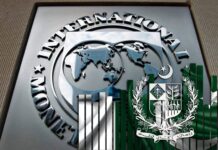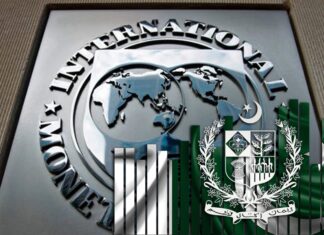There is a lot of noise regarding the savings rate, and how a transition towards the formal economy would enhance the savings rate. This is indeed a novel idea, and recent digitization measures would certainly boost savings rate as an increasing number of transactions flow through the system, while the size of the informal economy contracts. Over the last ten years, Pakistan has had a savings rate of 14.5 percent, stooping to a low of 12.5 percent only a few years back. Savings rate in Pakistan has gradually dropped in this century, after hitting a peak of 23 percent in 2004.
A traditional national income identity, where cumulative GDP for a country is a function of consumption, investment, government expenditure, and net exports (negative if imports are higher), suggests that as savings in an economy increases, overall investment also increases. The underlying assumption is that rational agents in an economy would save for a certain rate of return, which they would get by investing in the economy. As the overall stock of savings increases, the overall investment also increases. The overall increase in investment enhances the overall national income, with a spillover effect on increasing consumption (higher employment, and higher disposable income), as well as higher exports – if investments are routed towards export-oriented activities.
However, the real world is slightly different. Economic agents are not rational, and neither are government policies often driving the interplay of savings and investments. National accounts often consider what can be measured, or what is formal, and disregard the informal, or the shadow economy. Savings that either result in an increase in bank deposits, stock of national savings, or flow into the capital markets, among other avenues can be counted as savings in national accounts, eventually being routed as investments – with banks lending into the real economy (or back to the government), while various businesses raise capital in the primary and secondary markets, and so on. However, if the same capital is simply redeployed in a multitude of real estate schemes, which are not developed and simply operate secondary market of ‘plot files’, then that truly is savings – but isn’t really an investment that would be recognized in national accounts.
The last ten years have resulted in emergence of plotistan. An economy which encourages investment in plots (whether legal, or illegal) for accumulation of wealth, rather than allocating that capital towards more productive areas of the economy. The capital markets have barely seen a sliver of fresh retail capital flowing into it, depressing valuations, and discouraging businesses from fresh listings given unattractive valuations. Meanwhile, the value of plots in cities across the country have grown multifold.
A marginal, and negligible taxation regime, massive distortion in reported value and transaction value of real estate, and amnesty schemes to further accelerate scarce capital to move towards real estate rather than actual productive enterprise has ensured that plots remain a safe haven for preservation of grey capital. A largely cash based market also ensures that fire sales are far and few in between, as investors (or plot-ists) as they like to call themselves are fine with staying underwater as that still remains a more tax efficient structure than investing in the formal economy. A drop in savings rate during the last ten years has been accompanied by an increase in cash in circulation as a % of GDP, signifying how an increasing number of economic activity is being conducted in cash, rather than through formal financial institutions.
Over the last decade there has also been a rapid rise in development of secondary market of documentation files, which are underpinned by some plot which rarely anyone has ever seen, or which may not even exist. The files keep exchanging hands, and so does cash, well outside the ambit of the securities regulator. At least the files have some hope, or some tangible asset underlying it – secondary markets have also emerged for application forms, which allows the holder of that form the opportunity to buy a file and so on. An application form essentially is a derivative, a synthetic instrument underlying the documentation file, which provides legal ownership (or not) of a plot. In such a thriving market, which is tax-free, and devoid of any regulatory burden, there is little incentive for a rational agent to work in a regulated, and taxable environment of capital markets. If plots are not what fancy you, there is always an option to buy gold, which has barely been imported officially in the last twenty years.
There is no estimate of how much stock of gold actually exists in the country, and neither does anyone know how much of it is smuggled into the country every year. Finally, if you don’t like gold, you can always buy foreign currency – a draconian regime where it has been made difficult for citizens to legally buy foreign currency and deposit in their respective accounts, a grey market has erupted, wherein for a premium of only 3 to 4 percent, it is now possible to buy as much foreign currency you want, and store it under the mattress. Draconian measures are often a signal of things not being well under the sun – which further accelerates such movement of capital.
In a nutshell, savings isn’t an issue. Households do save, but they save in avenues which are untaxed and easily accessible via cash. Disproportionate taxes and high barriers to entry for capital markets does not make access to capital markets easier either. You can walk over to your friendly real estate agent and figure out a way to buy property worth a few hundred million rupees in cash – try doing that in capital markets, the documentation requirements would ensure that you run back to your real estate agent to take more capital from you.
Policies need to be formulated to redirect savings towards the formal economy, whether that is through a favorable taxation regime, or through introducing disincentives, or more regulation for plotistan. If nothing changes, the country will continue to operate with anemic savings rate, and shall always remain starved of growth capital required for sustainable industrial, or capital driven growth.























Very informative.
Much appreciated and informative indeed. Appreciated if in the start , Saving Rates would have been defined for more common understanding.
Very informative article, keep writing…..
Very true and comprehensible. The issues have been spelled out brilliantly, let me say these views are in conformity with my own thought process.I admit I lack vocabulary, coherence and lucidity to express my thought, so great job done by the writer. The core issue as to how this cycle of economic degradation is to be altered. It requires precise identification of the laws/ rules ( with exact section, rule and regulation numbers) which are to be added, amended or deleted. No one is doing that job.
State Bank of Pakistan does not allow legal import of gold . The gold import data , available with Pakistan bureau of Statistics , is for gold imported through entrustment scheme . State bank does not even allow legal import of gemstone and diamonds . They have barred the banks from providing dollars to the importers of above commodities. FE manual, import policy order and Sro 760 all are regulatory bottlenecks to stifle jewelry industry . How can anyone legally buy gold if no record exits of its import hence almost all the jewellers are out of tax net. Can not provide proof of purchase hence filing sales tax can make life difficult . Around 30-40 ton of gold is smuggled into the country every year . Imagine how much money is being sent out through hundi/hawala